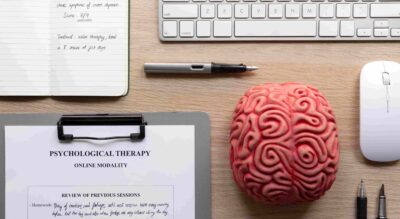Introduction
Have you ever questioned your worth when tackling a new challenge? Or felt uneasy accepting praise from others? Perhaps you replay mistakes in your mind, wondering if you’ll ever feel secure in your abilities. Now, imagine trusting yourself fully—approaching tasks without hesitation and forming more fulfilling relationships. Self-Esteem lies at the heart of how we perceive and interact with the world. This article offers a comprehensive guide to understanding Self-Esteem, presenting practical methods to cultivate it, and illustrating realistic scenarios that bring each concept to life. Prepare to discover fresh insights, research-based strategies.
Table of contents
1. Understanding Self-Esteem
1.1 What Is Self-Esteem?
Self-Esteem reflects how individuals value themselves, combining beliefs about personal worth with accompanying emotions. It involves both cognitive aspects—such as “I am capable” or “I deserve respect”—and feelings like pride, contentment, shame, or self-doubt. Psychologists typically break down Self-Esteem into several dimensions:
- Global Self-Esteem: An overall evaluation of one’s worth across life domains.
- Domain-Specific Self-Esteem: Self-perception in particular areas (e.g., academic ability, social skills, athletic competence).
- Trait Self-Esteem: A stable sense of self-worth that endures over time.
- State Self-Esteem: Temporary fluctuations in self-worth triggered by daily experiences or feedback .
1.2 Common Misconceptions
Despite being widely discussed, Self-Esteem often suffers from myths that hinder genuine growth:
- High Self-Esteem Equals Narcissism
- Many believe that valuing oneself demands vanity. In reality, healthy Self-Esteem combines a realistic self-view with empathy toward others. Narcissism, by contrast, arises from an overinflated ego and reliance on external approval. People with balanced Self-Esteem accept both strengths and limitations with sincerity .
- Compliments Alone Build Self-Esteem
- While compliments can uplift temporarily, lasting self-worth flourishes when individuals internalize accomplishments rather than depending solely on praise from others .
- Self-Esteem Remains Fixed After Childhood
- Although early experiences shape foundational self-worth, adult achievements, relationships, and deliberate practices continue to influence Self-Esteem significantly. It is never too late to strengthen or weaken this inner sense of value .
1.3 Why Healthy Self-Esteem Matters
Having balanced Self-Esteem offers numerous benefits:
- Mental Resilience: Individuals with solid self-worth tend to bounce back more quickly from setbacks, experiencing lower rates of depression and anxiety .
- Better Relationships: Confident people set clearer boundaries, seek respectful interactions, and avoid toxic dynamics. This often leads to more supportive friendships and partnerships .
- Enhanced Performance: When people believe in their abilities, they embrace challenges, welcome constructive feedback, and learn from mistakes—fueling academic, professional, or creative growth .
- Greater Fulfillment: Viewing oneself as valuable encourages pursuing meaningful goals and appreciating life’s small victories, resulting in heightened overall satisfaction .
Conversely, low Self-Esteem can trap individuals in self-doubt, limiting their potential and creating a cycle of avoidance and regret. Recognizing its importance motivates us to invest time and effort in nurturing a healthier self-regard.
2. Practical Steps to Enhance Self-Esteem
2.1 Identify and Celebrate Your Strengths
The first step is to compile a Strengths Inventory—a transformative exercise with immediate benefits. By listing at least ten positive qualities, skills, or past achievements (for example, “I listen attentively” or “I completed a demanding project”), you shift focus from flaws to assets .
How to Create Your Inventory:
- Find a Quiet Moment (10–20 minutes): Choose a distraction-free environment.
- Recall Achievements: Reflect on successes—both big and small.
- Write Each Strength Clearly: Use bullet points for clarity.
- Place It in Plain View: Keep it on your desk or phone.
- Review Regularly: Whenever doubt arises, revisit this list to reinforce your capabilities.
Over time, this habit retrains your mind to identify proof of competence, making positive self-perception more automatic.
2.2 Set Achievable Goals Using the S.M.A.R.T. Approach
Instead of vague or lofty ambitions, adopt S.M.A.R.T. Goals to ensure steady progress and boost confidence:
- Specific: Define exactly what you want to achieve (e.g., “Learn ten new vocabulary words in a foreign language each week”).
- Measurable: Establish how you will track progress (e.g., maintain a vocabulary journal).
- Achievable: Choose realistic steps—avoid overcommitting (e.g., study grammar for 30 minutes a day, not three hours).
- Relevant: Align goals with personal values (e.g., improving communication to connect better with community members).
- Time-bound: Set a clear deadline (e.g., “By July 31, 2025, hold a five-minute conversation in that language”).
Why This Works:
- Prevent Overwhelm: Each small success—completing a lesson, mastering a phrase—confirms your ability.
- Celebrate Milestones: Recognize progress, however minor, to reinforce motivation.
- Adjust As Needed: If a step feels too challenging, recalibrate rather than abandon the goal .
2.3 Cultivate Self-Compassion
Criticism often leads to harsh self-judgment. Replacing that with Self-Compassion fosters resilience and steadier self-worth.
Steps to Practice Self-Compassion:
- Notice Negative Thoughts: When you catch yourself thinking “I’m not good enough,” label it as a thought, not an absolute truth.
- Use Kind Replacements: Transform “I failed” into “I’m learning from this” or “Mistakes help me grow.”
- Employ a Physical Anchor: Gently place a hand on your heart and breathe deeply for five seconds to remind yourself that imperfection is universal.
Research indicates that self-compassion correlates with higher well-being, reduced anxiety, and strengthened resilience in adversity . As gentle self-talk becomes habitual, Self-Esteem flourishes organically.
2.4 Surround Yourself with Supportive Influences
Our social environment plays a pivotal role in shaping Self-Esteem. Evaluate and refine your circles:
- Encouraging Relationships: Invest time with friends or mentors who celebrate your efforts and offer constructive feedback.
- Limit Negative Inputs: Identify social media accounts or acquaintances that spark feelings of inadequacy, and reduce interaction when necessary.
- Join Positive Communities: Engage in groups—like book discussions, volunteer organizations, or hobby clubs—where shared goals create collective encouragement.
Why It Matters:
- Positive peers reinforce your belief in yourself.
- Helping others shifts focus from self-critique to empathy, further solidifying inner worth .
2.5 Acquire and Master New Skills
Learning something novel offers tangible evidence of growth, reminding you that change and improvement are possible. Whether it’s crafting, language learning, or technical know-how, the process itself validates competence.
Action Plan for Skill Development:
- Select an Interest: Choose a skill you genuinely enjoy—intrinsic motivation ensures consistency.
- Define Beginner Milestones: Break down the skill into bite-sized tasks (e.g., “Cook one new healthy meal” or “Read and summarize one short article in a new language”).
- Schedule Regular Practice: Commit to at least three 30-minute sessions each week.
- Track Progress: Keep a simple log—notes, photos, or recordings—so you can visually witness improvement.
- Celebrate Achievements: At each milestone, acknowledge your advancement (e.g., share with a friend or mark it on a calendar).
A 2016 study demonstrated that adult participants engaging consistently in a new hobby reported a 14% increase in global self-worth after three months . As competence grows, your internal narrative shifts: you become someone who adapts and overcomes.
3. Realistic Scenarios Illustrating Self-Esteem Growth
3.1 Scenario 1: Responding to Workplace Feedback
Context: Fatima, a project coordinator at a nonprofit, received constructive feedback in March 2025 indicating her reports lacked structure and clarity. Initially, she felt inadequate and contemplated avoiding future assignments.
Challenges:
- Anxiety about presenting to key stakeholders in April 2025.
- Fear that criticism signaled she wasn’t fit for her role.
Steps Fatima Took:
- Objective Review: She revisited past reports to pinpoint specific issues—weak introductions and missing key data summaries.
- Focused Learning: Enrolled in an online course titled “Structured Report Writing”, dedicating two evenings per week over six weeks.
- Mentorship Request: Asked a senior colleague for feedback on each draft section, applying suggestions iteratively.
- Strength Log: After completing each draft, she recorded one improvement, such as “Now the executive summary clearly outlines key findings.”
Outcome by Late May 2025:
- Her donor presentation received praise for its clarity.
- Fatima’s confidence soared; she viewed feedback as a growth catalyst rather than a personal failing.
- Her Self-Esteem stabilized, evidenced by her proactive approach to future tasks .
3.2 Scenario 2: Finding Value Through Community Service
Context: Ahmed, a university student, felt socially isolated and doubted his own worth. After missing an opportunity to answer a professor’s question in class, his self-confidence plummeted.
Challenges:
- Believing he “lacked anything meaningful” to contribute.
- Avoiding class discussions due to fear of judgment.
Steps Ahmed Took:
- Volunteer Involvement: Began tutoring children at a weekend literacy program, devoting Saturday mornings to guiding them through basic reading exercises.
- Skill Application: Despite initial nerves, he noticed that when explaining simple concepts, children’s faces lit up—feedback he rarely experienced elsewhere.
- Positive Reinforcement: Parents expressed gratitude, often saying, “Your help makes a real difference for my child.”
- Journaling Experience: Each Sunday, Ahmed recorded how teaching impacted his mood, noting increased purpose and self-worth.
Outcome After Three Months:
- Ahmed returned to lectures with a renewed sense of capability.
- He began offering insights during class, drawing on his teaching experiences.
- His peers recognized his willingness to contribute, reinforcing his belief in himself .
3.3 Scenario 3: Transforming Academic Self-View
Context: Sara, a high school junior, believed she “couldn’t do math.” After scoring 58% on a January 2025 midterm, she felt defeated and avoided math-related tasks.
Challenges:
- Viewing the low grade as proof of inherent inability.
- Hesitating to seek help, convinced it wouldn’t make a difference.
Steps Sara Took:
- Reframing Failure: With guidance from her older sister, she reframed the midterm as feedback, not a verdict.
- Targeted Tutoring: Joined a peer group meeting twice weekly to review algebra basics.
- Micro-Goals: Aimed for a 75% on the next test rather than an unrealistic perfect score.
- Mistake Log: For each incorrect problem, she recorded the error, reviewed explanations, and practiced similar tasks until mastery.
Outcome by April 2025 Exam:
- Sara achieved 82%, surpassing her target.
- Celebrated this progress with family, reinforcing her confidence.
- She volunteered to tutor classmates facing similar hurdles, further solidifying her sense of competence and boosting her Self-Esteem .
3.4 Scenario 4: Rising Above a Family Crisis
Context: In February 2025, Layla’s father lost his job, plunging the household into financial strain. Overwhelmed, Layla believed she was powerless to help.
Challenges:
- Feeling like a burden rather than a support.
- Witnessing parental stress intensified her self-doubt.
Steps Layla Took:
- Family Meeting: Initiated an open discussion, expressing concern and offering practical assistance with household tasks and budgeting.
- Skill Application: Leveraged her cooking skills to prepare two family meals per week, relieving her mother and cutting grocery expenses.
- Emotional Support: Dedicated Sundays to listening to her younger brother’s worries, validating his feelings and offering calm reassurance.
- Financial Learning: Enrolled in an online budgeting workshop, acquiring tools to help plan and track family expenses effectively.
Outcome by May 2025:
- Layla’s involvement reduced household tension.
- Her parents praised her maturity; she recognized her capacity to contribute meaningfully.
- This newfound sense of agency elevated her Self-Esteem from “I’m a burden” to “I’m a source of strength” .
4. Evidence and Research Supporting Self-Esteem Practices
4.1 Key Research Insights
- Rosenberg Self-Esteem Scale (RSES): Created in 1965, this ten-item measure asks individuals to rate statements like “On the whole, I am satisfied with myself.” Studies show that scoring in the top 30% often corresponds with better mental health and enhanced life satisfaction .
- Tafarodi & Swann (1995): They demonstrated that both self-perceived accomplishments and social acceptance influence Self-Esteem. Their data revealed that positive peer feedback boosted self-worth scores by 12%, even when self-judgment remained unchanged .
- Schimmack & Diener (2003): This cross-cultural study found that in individualistic societies, Self-Esteem correlates more strongly with self-reported happiness than in collectivist cultures .
- Baumeister (2005): In “Exploding the Self-Esteem Myth,” he argued that simply boosting self-worth without enhancing competence backfires. He reported that programs combining skill-building and self-regard saw a 20% greater improvement in long-term well-being than those focusing on affirmation alone .
4.2 Applying Research to Everyday Life
- Integrate Skills and Self-View: Instead of seeking empty praise, link actual skill progress (like improved report writing) with positive reflection—creating a durable boost in Self-Esteem.
- Account for Cultural Context: Recognize that values differ globally. Emphasizing contributions to family and community aligns personal worth with shared values, ensuring relevance for readers everywhere.
- Balance Expectations: Resist demanding flawless performance. Embrace feedback as a path to growth, as Fatima did in the workplace example.
- Track Progress Consistently: Use tools like RSES every six months. Monitoring self-worth helps identify plateaus or dips, enabling timely adjustments to strategies.
By translating empirical findings into actionable steps, individuals worldwide can transform abstract concepts of Self-Esteem into tangible practices that yield measurable benefits.
Conclusion
Strengthening Self-Esteem is an ongoing journey woven from daily choices, relationships, and self-reflection. By acknowledging personal strengths, setting achievable goals, practicing self-compassion, fostering positive environments, and continually developing new skills, anyone can shift from self-doubt to genuine confidence. The stories of Fatima, Ahmed, Sara, and Layla illustrate that real-life challenges—whether in the workplace, classroom, community, or family—serve as springboards for growth when met with intention and persistence.
As you move forward, remember that each small step—creating a strengths list, practicing kind self-talk, or volunteering at a local center—reinforces your intrinsic worth. With each milestone, Self-Esteem becomes more resilient, enabling you to face life’s uncertainties with renewed assurance and optimism. Embrace this process wholeheartedly, and watch as your inner confidence not only enriches your own life but also uplifts those around you.
References
Warning: The provided links lead only to the specified content. Other areas of those sites may contain material that conflicts with some beliefs or ethics. Please view only the intended page.
- Kendra Cherry (2025). “What Is Self-Esteem?” Verywell Mind.
https://www.verywellmind.com/what-is-self-esteem-2795868 - “Rosenberg Self-Esteem Scale.” Wikipedia.
https://en.wikipedia.org/wiki/Rosenberg_self-esteem_scale - Baumeister, Roy F. (January 2005). “Exploding the Self-Esteem Myth.” Scientific American.
https://www.scientificamerican.com/article/exploding-the-self-esteem-myth/


















